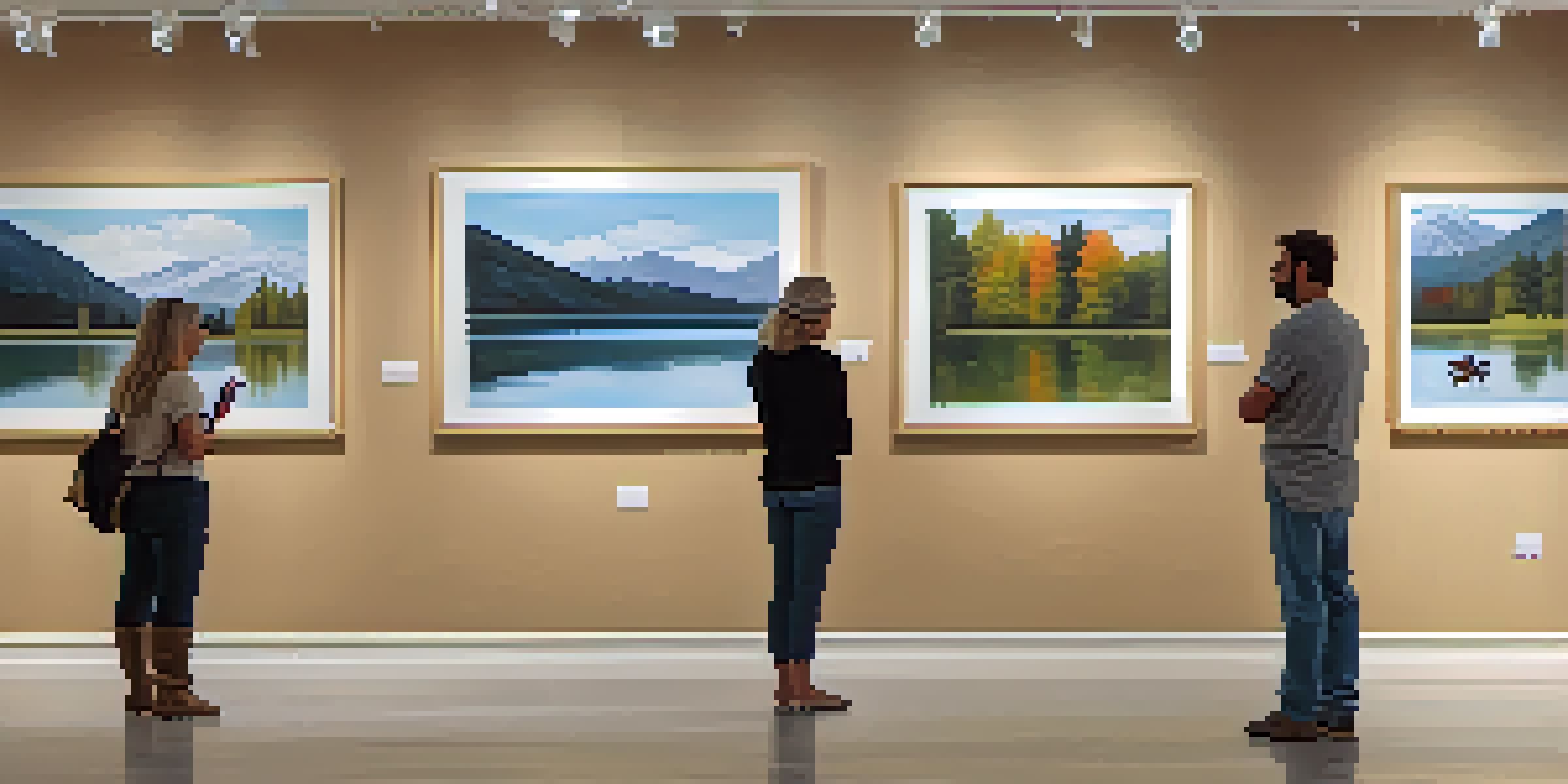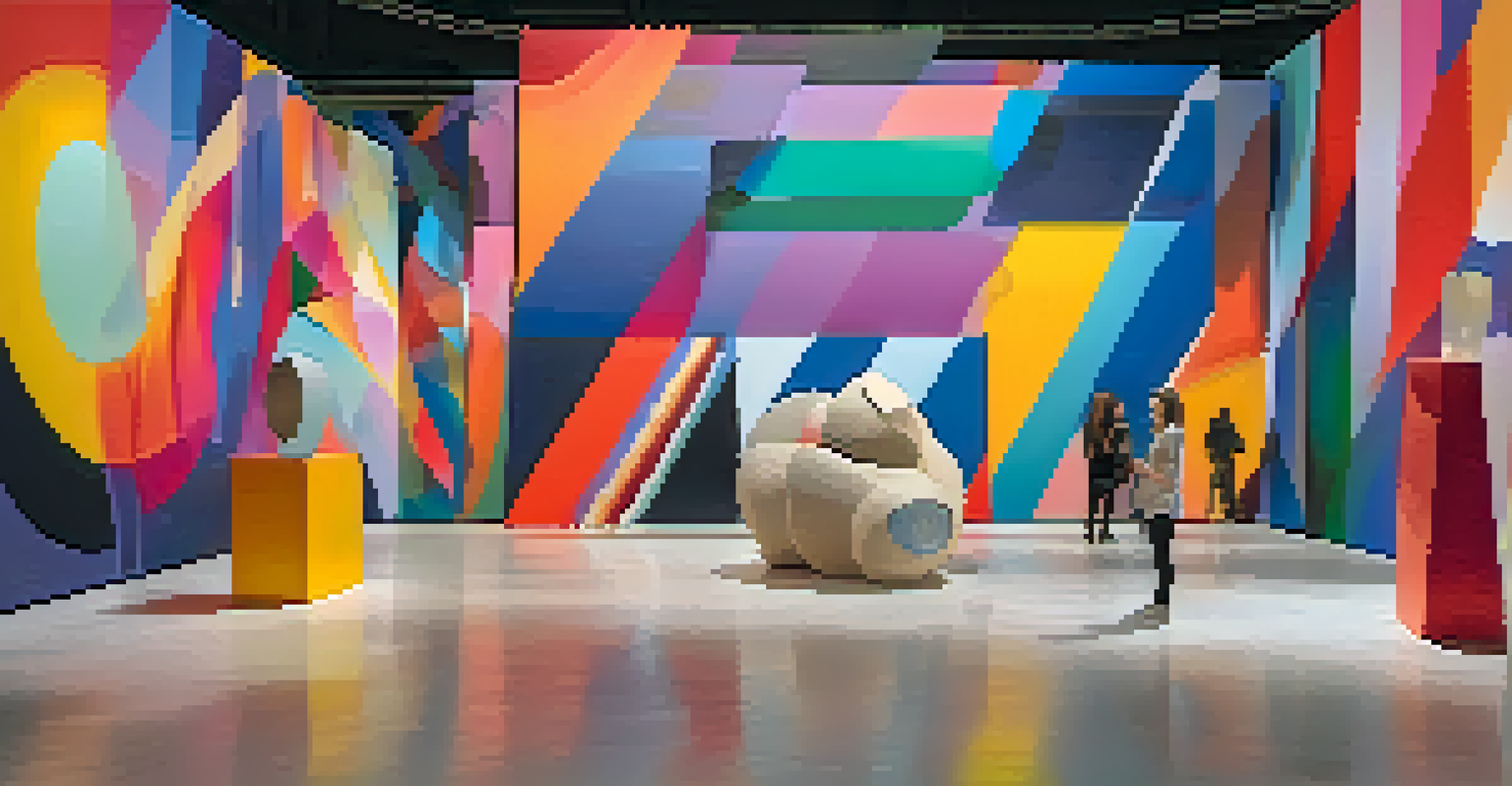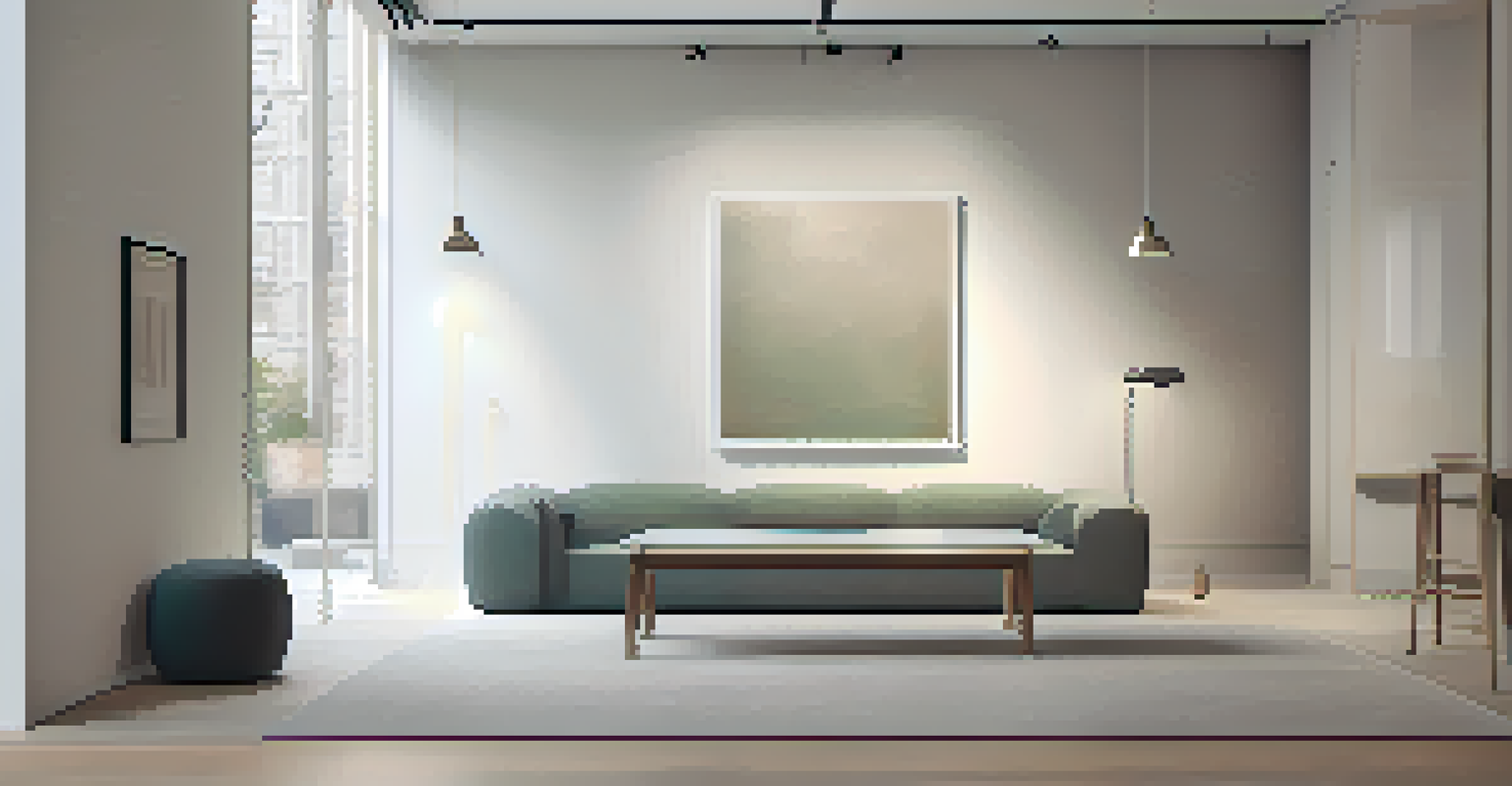Sound and Silence: Their Role in Visual Art Spaces

Understanding the Basics of Sound in Art Spaces
Sound can greatly enhance the experience of visual art, adding layers of meaning and emotion. Whether it’s the gentle hum of an installation or the cacophony of a soundscape, these auditory elements invite viewers to engage on a deeper level. For instance, a gallery featuring ambient sound can transform a simple visual piece into a multi-sensory experience, encouraging visitors to linger and reflect.
Art is not freedom from discipline, but disciplined freedom.
Moreover, sound can guide the viewer’s attention, directing them toward specific artworks or creating a thematic atmosphere. Imagine walking into a space where the sound of water complements a series of paintings depicting serene lakes. This connection between sound and visuals can evoke feelings and memories, enriching the viewer’s encounter with the art.
In contrast, the absence of sound—silence—can also play a pivotal role. In a quiet room, even the smallest sound can stand out, creating a heightened sense of awareness. This interplay between sound and silence can lead to moments of introspection, allowing viewers to connect with the art in a more personal way.
The Influence of Silence on Art Interpretation
Silence in art spaces can create a contemplative environment that encourages deeper interpretation of the works on display. For example, when surrounded by silence, visitors may feel more compelled to engage with the emotions and themes presented in the art. This can lead to a more profound understanding of the artist's intent and the message they wish to convey.

Additionally, silence can evoke a sense of space and time, allowing viewers to reflect on their own experiences in relation to the artwork. In a noisy world, a silent gallery can feel like a sanctuary, offering a respite where thoughts can flow freely. This intimate connection between the viewer and the art can foster a lasting impact that resonates long after leaving the space.
Sound Enhances Art Experiences
Incorporating sound into art spaces creates multi-sensory experiences that deepen viewer engagement and emotional connection.
Furthermore, silence can also serve as a powerful contrast to sound, highlighting the importance of both elements in the art experience. By alternating between moments of sound and silence, artists can create dynamic narratives that challenge the viewer’s perception and understanding of the work.
Case Studies: Sound Art Installations
Many contemporary artists have embraced sound as a primary medium, creating immersive installations that redefine traditional art spaces. For instance, the work of Janet Cardiff, known for her audio walks, engages viewers by merging narrative soundscapes with the physical environment. Visitors not only observe the art but also become active participants, following audio cues that lead them through a carefully curated experience.
Sound is the vocabulary of nature.
Another notable example is the sound art of Bill Fontana, who captures and manipulates real-time sounds from various environments. His installations often highlight the beauty and complexity of urban soundscapes, inviting viewers to reconsider their everyday auditory experiences. These innovative approaches demonstrate how sound can transform the way we perceive visual art.
These case studies illustrate that sound can be an art form in itself, capable of standing alongside traditional visual media. By integrating sound into their work, artists expand the boundaries of artistic expression, offering audiences a unique lens through which to engage with their creations.
The Role of Acoustics in Art Spaces
Acoustics—the science of sound—plays a crucial role in how we experience art in physical spaces. The design of a gallery or museum can influence how sound travels, affecting everything from clarity to volume. For example, high ceilings may create echoes that enhance or distort an auditory experience, while softer materials can absorb sound, leading to a more intimate atmosphere.
Moreover, understanding acoustics allows curators to create environments that complement the artworks on display. By thoughtfully considering how sound interacts with space, they can enhance the overall visitor experience. A well-designed space can make a significant difference in how sound and silence contribute to the interpretation of the art.
Silence Encourages Reflection
The use of silence in art spaces fosters contemplation, allowing visitors to engage more deeply with the themes and emotions of the artwork.
As artists and curators become more aware of the impact of acoustics, they can craft exhibitions that truly engage all the senses. This holistic approach to art curation fosters a richer connection between the viewer and the artwork, inviting deeper exploration and appreciation.
Cultural Perspectives on Sound and Silence in Art
Different cultures perceive and interpret sound and silence in unique ways, influencing how art is experienced globally. For example, in some Indigenous cultures, silence is a powerful form of communication, representing respect and contemplation. This understanding can lead to art installations that prioritize silence as a means of honoring tradition and history.
Conversely, in cultures where music and sound are integral to communal experiences, art spaces may be filled with vibrant auditory elements that celebrate life and community. This cultural lens highlights the importance of context when considering how sound and silence function within art spaces, as they can evoke specific emotional responses based on individual backgrounds.
By embracing these diverse perspectives, artists can create more inclusive experiences that resonate with a broader audience. Understanding the cultural significance of sound and silence enriches the narrative of the artwork, encouraging viewers to explore the meanings that resonate personally and socially.
The Impact of Technology on Sound in Art Spaces
Technology has revolutionized the way sound is integrated into art, offering new tools and possibilities for artists and curators alike. From sophisticated sound systems to interactive installations, technology allows for a dynamic exploration of sound that was previously unimaginable. For example, virtual reality experiences can immerse viewers in soundscapes that transform their perception of visual art.
Moreover, advancements in audio editing and production enable artists to manipulate sound in ways that enhance their visual works. This fusion of technology and creativity can lead to innovative presentations that captivate audiences. Think of a gallery where visitors can control the soundscape through their movements, creating a personalized experience that changes with each visit.
Technology Transforms Sound in Art
Advancements in technology enable innovative sound integration, offering dynamic and interactive experiences that redefine how art is perceived.
As technology continues to evolve, the integration of sound in art spaces will likely expand, offering even more opportunities for creative expression. This not only enriches the art experience but also encourages collaboration between artists, sound designers, and technologists, fostering a vibrant ecosystem of creativity.
Future Trends: Sound and Silence in Art Spaces
Looking ahead, the role of sound and silence in art spaces is set to evolve further, driven by both technological advancements and changing audience expectations. As more artists experiment with sound, we can anticipate a rise in hybrid art forms that blend visual and auditory elements in groundbreaking ways. Imagine walking into a gallery where each artwork triggers a unique sound, creating a personalized auditory journey.
Additionally, the trend towards mindfulness and wellness in art spaces may lead to more deliberate uses of silence. Spaces designed for quiet reflection and contemplation will likely become more prevalent, offering visitors a reprieve from the noise of everyday life. This shift could encourage deeper connections with art and foster a sense of community among viewers.

Ultimately, the future of sound and silence in art spaces is bright, as these elements continue to shape how we engage with visual art. By embracing these trends, artists and curators can create transformative experiences that resonate with audiences on multiple levels, making art more accessible and impactful than ever before.